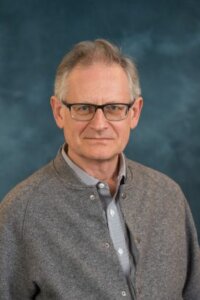Jewish music in Germany after the Holocaust

Image by Oxford University Press
Read this article in Yiddish.
Tina Frühauf
Transcending Dystopia: Music, Mobility, and the Jewish Community in Germany, 1945-1989
Oxford University Press, 2021, 644 pp.
Immediately after World War II, the German rabbi Leo Baeck, who had survived the war in the concentration camp Terezin, declared: “The history of German Jews has ended once and for all.” These words stand at the beginning of a new book, “Transcending Dystopia: Music, Mobility, and the Jewish Community in Germany, 1945-1989,” by the American music historian, Tina Frühauf.
This thorough and detailed study aims to prove that Rabbi Baeck was mistaken. After Germany’s military defeat in 1945, Jewish life gradually came back to life, albeit only a fragment of what it had been before the Holocaust. Not only was the Jewish population of Germany much smaller; its demographic had also changed. The few German Jews who had survived the Holocaust left Germany in the first few years after the war. Those Jews who remained in the country were mostly East European Jews who were sent to DP camps in Germany and Austria after the war and then decided to settle in those countries.
These Jewish immigrants were unfamiliar with German-Jewish culture, especially with progressive Reform Judaism whose prayer services, including a co-ed choir and organ accompaniment, were alien to them. To make matters worse, many Orthodox synagogues and Reform temples had been destroyed by the Nazis during the “Kristallnacht” pogrom of 1938, so the East European Jewish immigrants had to fend for themselves. They continued to pray in the more traditional East European style and culturally, their music consisted of popular Yiddish folksongs and theater songs.
In the 1950s, some German Jews, who had initially settled in Israel but never felt at home there, gradually began to return to Germany. Among them were several musicians, who proceeded to bring back the German-Jewish style of synagogue music back to Germany.
In the first years after the founding of the State of Israel, the German Jews still sang Zionist songs in Hebrew with enthusiasm, but interestingly, it was the Yiddish-speaking theater comedians touring from Israel who had the greatest success with German-Jewish audiences. Frühauf writes that these comedians embodied both the past and the future, both nostalgia and hope. Their jokes recalled prewar Jewish life in the shtetl and large cities, while they themselves represented the young Jewish state.
In the 1970s and 1980s, klezmer music revived by young musicians arrived in West Germany from the United States, along with the new liturgical melodies by [songwriter Rabbi Shlomo Carlebach’s](https://en.wikipedia.org/wiki/Shlomo_Carlebach_(musician) Neo-Hasidic melodies). According to Frühauf, Jewish musical culture — which consisted of three components: prayer melodies, Yiddish music and popular Israeli music — began to thrive in West Germany.
Frühauf describes the different scenarios in what was then two Germanies: West Germany and East Germany. The tiny Jewish community in East Germany (the “German Democratic Republic”), part of the Soviet bloc, were mostly Communists of Jewish background with no interest in Jewish religion or culture. Despite the lack of interest among the Jews, the Communist government was eager to show the world that it supported the Jews so they permitted cantor Werner Sander to organize a synagogue chorus in Leipzig. Another well-known Jewish singer in East Germany was the Dutch-born Lin Jaldati, who sang her own Yiddish repertoire. Hebrew songs from Israel were taboo, since East Germany, naturally, had to toe the Soviet Union’s anti-Zionist line.
In the beginning, Jews conducted memorial ceremonies for the Holocaust victims privately. Antisemitic sentiments were prevalent among the German population in the first years after their defeat, and there was no interest in hearing about the genocide against the Jews. It wasn’t until the younger generation of Germans born after the war became interested in finding out what happened during the Nazi era, that learning about, and commemorating the victims of the Holocaust became an important part of German consciousness.
The changes in Jewish and German musical culture reflect this historical development. Partly because Yiddish is itself a Germanic language, it served as a link of intercultural dialogue between Jews and Germans. According to Frühauf, klezmer music today is part of the German musical mainstream. The concept of Jewishness has taken on an ethnic character, no longer purely religious as it was in Germany before the war, thus allowing non-Jewish Germans to embrace it as part of its history.
By analyzing the development of Jewish life in Germany through its music, Frühauf gives us a fresh perspective on the cultures of East and West Germany after the Holocaust. Music was a central component of the rich German-Jewish culture before the war, and it remains just as important today, but its substance, style and the way it was received by the public are all markedly different.

















